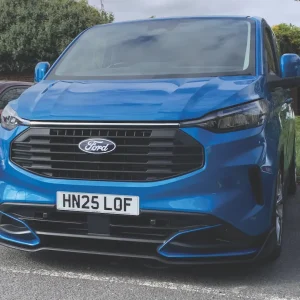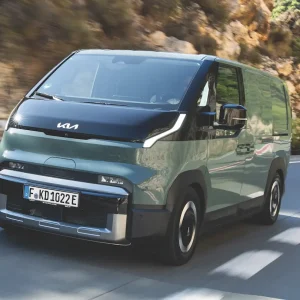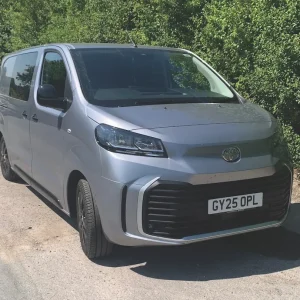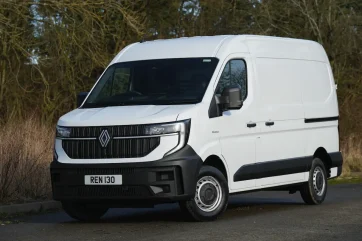
To say the new Renault Master has been highly acclaimed would be an understatement – it followed up winning the International Van of the Year prize by taking our own What Van? Award for Van of the Year. However, our previous review of this fourth-generation large van focused on the fully electric E-Tech variant, which although clearly important seems unlikely to be the best-seller. Now, though, we’ve had the chance to try the diesel version of the new Master on UK roads.
Performance and drive
A choice of three diesel engines is available, producing 130hp, 150hp, or 170hp. We drove the middle option, and found it offered plenty of grunt for any situation, whether pulling out at urban junctions, keeping up with B-road traffic, or cruising at motorway speeds. At higher speeds in particular it also offers good refinement – you’re more likely to hear wind and road noise than the engine on motorways. Our van’s six-speed manual gearbox had a nice positive shift action (a nine-speed auto is also available), and this went well with light and easy steering, and a chassis which for a large van felt commendably composed on a twisty road.
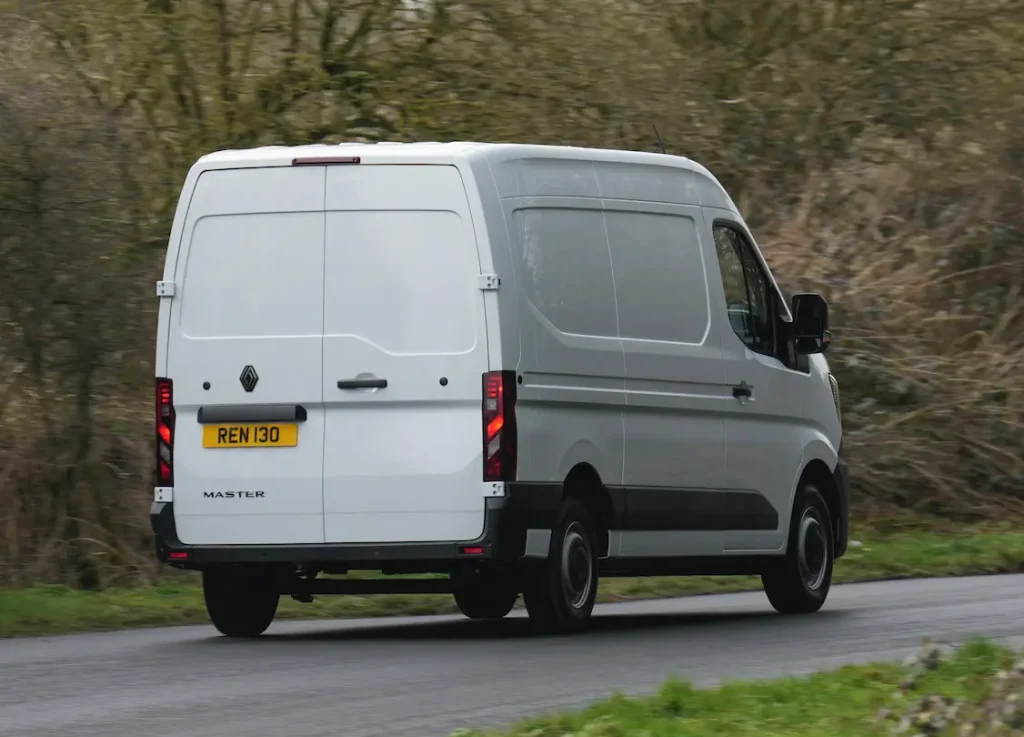
With no load in the back during our test the ride was occasionally jiggly, but there was no harshness, with the suspension absorbing potholes well. Adding to the comfort are seats adapted from those fitted to Renault’s Austral passenger car, which offer especially good lumbar support.
On a similar theme, Renault has intentionally mounted the Master’s steering wheel more vertically than would be usual, and this results in a relatively car-like driving position for a large van (although we found it a little tricky to choose a seat position initially due to the clutch pedal being mounted higher than the brake or accelerator). We should also add that this steering wheel has a high-quality feel, as does the surrounding switchgear.
On a more negative note, while an electric handbrake will be available in a couple of months (and will be standard with the electric Master), for now you get a manual handbrake – not so bad in itself, but this one is annoyingly placed, as you have to reach around the driver’s armrest to use it (or fold the armrest away, but that’s not a choice that should have to be made since it renders the armrest pointless).
Speaking of annoyances, while Renault is required by law to audibly alert the driver in cases of speeding, it has no one else to blame for the speed information this system uses being inaccurate – we found ourselves being bonged at several times during our test for ‘speeding’ when we clearly weren’t, until we turned the system off (though to comply with the law it returns by default each time the van is switched on).
Interior and loading
While the electric Master is only available with the Advance trim level, diesel buyers can choose between Advance and higher-spec Extra trim. The latter, which Renault expects to mainly interest owner-drivers, is tested here.
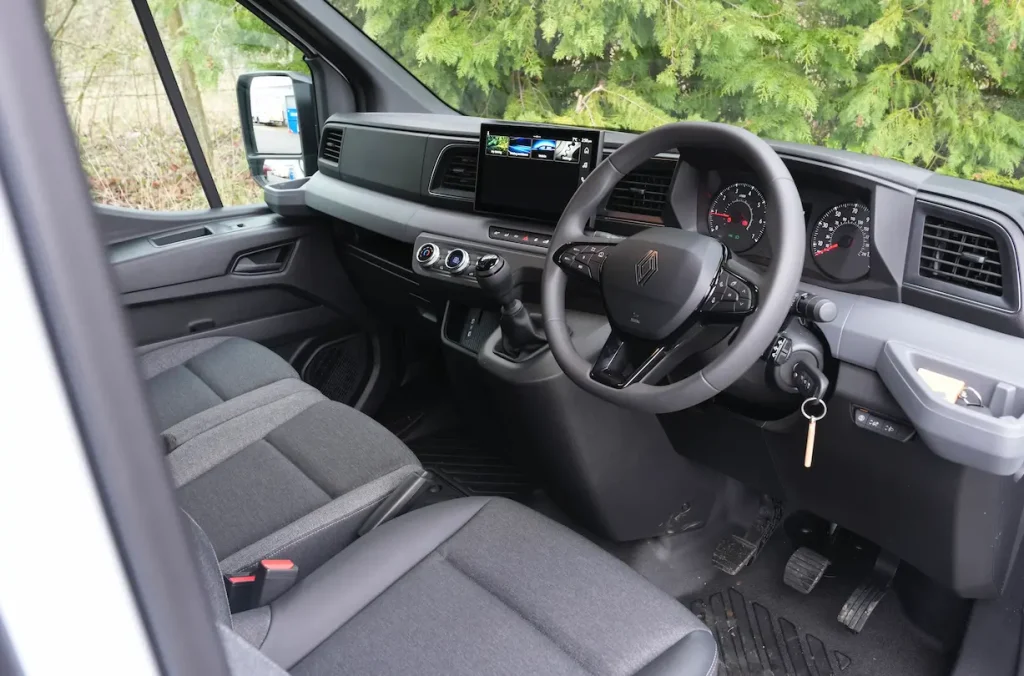
Among the additional features are built-in Google services – apparently left off the Advance due to some fleets’ GDPR concerns. These run on the same 10in touchscreen which all Masters get, which also has wireless Apple Carplay and Android Auto connectivity. The screen falls nicely to hand due to the middle of the dashboard angling towards the driver, and is usefully responsive. The electric Master also comes with a fully digital driver display, but the diesel version must make do with a more traditional instrument panel, with just a 3.5in TFT display in the middle – not that there’s too much wrong with this in terms of functionality.
The Master’s cabin also features much design cleverness based around the middle seat. Fold it down, and it becomes a useful table/desk (including a storage cubby with a strap to secure a laptop). Alternatively, lift the seat squab, and a commodious stowage area is accessible under the bench. Renault says up to 135 litres of storage is available around the cabin.
As for the Master’s main load area, the range includes three panel van sizes – medium wheelbase and roof (tested here); long wheelbase, medium roof; and long-wheelbase, high roof. Load bay dimensions are the same for both diesel and electric Masters, however with our spec the diesel has a 284kg payload advantage at 3.5t (although the 4.0t electric Master, taking advantage of the UK government’s electric van derogation, turns the tables on the diesel with a further 176kg of payload capacity). Extra trim includes LED load bay lighting.
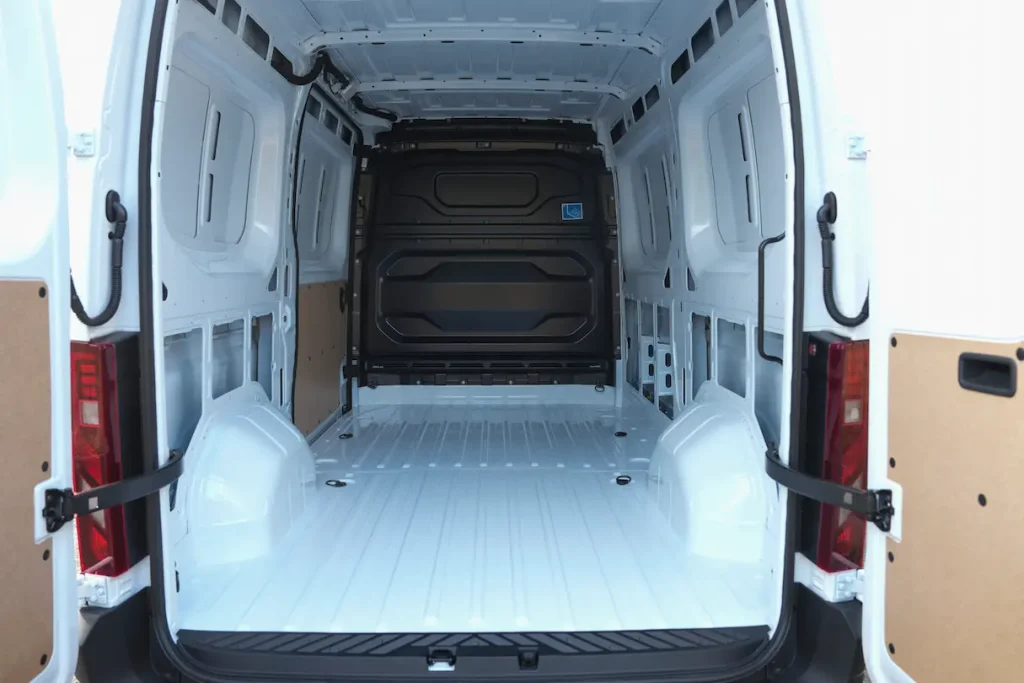
As well as impressing on the road, the Master also looks good value for money, since at £36,840, excluding VAT, the model tested here by far undercuts the Ford Transit, for which range prices start at over £40k. It’s another factor in making the Master an impressive overall package.
| Model | Renault Master MM35 Extra Blue dCi 150 |
| Price (ex VAT) | £36,840 |
| Price range (ex VAT) | £34,590-£47,005 |
| Warranty | 3yrs/100,000mls |
| Service intervals | 2yrs/24,000mls |
| Load length | 3,225mm |
| Load width (min/max) | 1,380mm/1,537mm |
| Load bay height | 1,885mm |
| Gross payload | 1,306kg |
| Load volume | 10.8m3 |
| Engine size/power | 1,998cc/150hp |
| Combined fuel economy | 37.2mpg |
| CO2 | 199g/km |
| On sale | October 2024 |
| Key rival | Ford Transit |
| Verdict | Diesel powertrain does little to dent the Master’s award-winning appeal. |
| Score | 9/10 |

